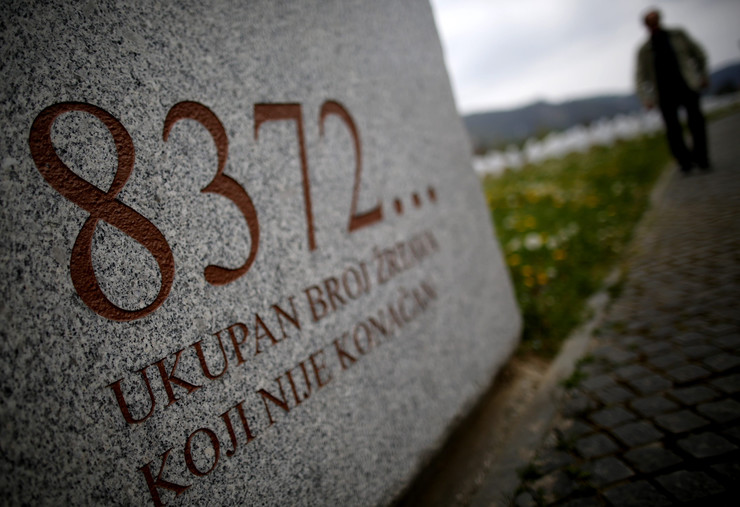Srebrenica Monument/spomenik

Srebrenica ligger i östra Bosnien, i det som idag är den serbiska delen av Bosnien-Hercegovina, i Republika Srpska. Namnet Srebrenica betyder silver och i området fanns både guld-, silver-, zink- och blygruvor. Srebrenica var också en populär kurort.
Under några dagar i juli 1995 blir staden skådeplats för ett omfattande folkmord, det första i Europa sedan Förintelsen. Över 8 300 män och unga pojkar mördas systematiskt under några få dagar. Sedan 1993 hade Srebrenica varit en frizon under FN:s beskydd, men FN visade sig inte vara tillräckligt skydd mot den anfallande bosnienserbiska armén.
Många lämnade Srebrenica efter massakern, många av husen är fortfarande övergivna och hopplöshet och brist på framtidstro präglar den lilla staden.
Efter ett folkmord är det många som ställer sig frågan; hur kunde det hända. FN var där, världen såg vad som skedde. Ändå mördades så många människor på så kort tid i en process som inleddes spontant, och sedan utfördes systematiskt.
Det här är en av flera städer som utsattes för folkmord och också främsta anledningen till att vi idag har tusentals bosniaker bosatta i Sverige.

Srebrenica massacre, slaying of more than 8 300 Bosniak (Bosnian Muslim) boys and men, perpetrated by Bosnian Serb forces in Srebrenica, a town in eastern Bosnia and Herzegovina, in July 1995. In addition to the killings, more than 20,000 civilians were expelled from the area—a process known as ethnic cleansing. The massacre, which was the worst episode of mass murder within Europe since World War II, helped galvanize the West to press for a cease-fire that ended three years of warfare on Bosnia's territory (see Bosnian conflict). However, it left deep emotional scars on survivors and created enduring obstacles to political reconciliation among Bosnia's ethnic groups.
International Criminal Tribunal for the Former Yugoslavia
The International Criminal Tribunal for the Former Yugoslavia—established before the massacre to scrutinize ongoing military conduct—concluded that the killings at Srebrenica, compounded by the mass expulsion of Bosniak civilians, amounted to genocide. It pinned principal responsibility on senior officers in the Bosnian Serb army. But the United Nations (UN) and its Western supporters also accepted a portion of the blame for having failed to protect the Bosniak men, women, and children in Srebrenica, which in 1993 the UN Security Council had formally designated a "safe area." In a critical internal review in 1999, UN Secretary-General Kofi Annan wrote, "Through error, misjudgment and an inability to recognize the scope of the evil confronting us, we failed to do our part to help save the people of Srebrenica from the [Bosnian] Serb campaign of mass murder." Although Serbia was not legally implicated in the massacre, in 2010 the Serbian National Assembly narrowly passed a resolution that apologized for having failed to prevent the killings.
